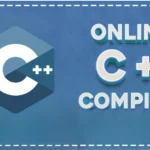The ability to leverage language models is becoming increasingly crucial in today’s data-driven world. Language models, like the Large Language Model (LLM), have demonstrated exceptional performance in various natural language processing tasks. Using your data to train LLM can yield specialized solutions for your unique requirements. We’ll take you step-by-step through the How to Train LLM on Your Own Data in this guide.
Generic vs. Retrained LLMs
- Generic LLMs: These LLMs are often trained on large datasets because they are intended to accommodate a diverse range of use cases. Large LLMs, like those developed by Google and OpenAI, can incorporate almost all of the internet’s content.
- Retrained or fine-tuned LLMs: These LLMs are trained on specially created data sets, at least in part. In a corporate setting, these could be emails or paperwork unique to a certain company.
Advanced Technical Requirements
- Principles of deep learning and machine learning
- Techniques for training and fine-tuning models that work
- knowledge of neural networks and how information is processed by them
How to Train LLM on Your Own Data? Process
- Using Your Website
- Sign Up for a Free Account: To get started, go to app.copyrocket.ai and create a free account. You will receive 1000 credits free of charge upon registration, allowing you to begin your LLM training without having to make any upfront payments.
- Navigate to Chatbot Training Settings: Choose “chatbot training” under “chat settings” from your dashboard. You will start the training process for your customized LLM in this section.
- Adding a Template: Select the “add template” option. This is an important step because it sets up your system to import data from your website.
- Select Website Data Ingestion Method: There are four data ingestion methods that you will see. Click on “website” (notice that this is for multiple pages, not just one page) as we are concentrating on the content of websites, and then click the reload button next to it. By taking this step, you tell the system to begin collecting training data from your website’s pages.
- Disable Cloud Flare if Necessary: Make sure to turn off Cloud Flare temporarily if it’s used on your website. This guarantees that there are no hiccups or obstructions in the scraping process.
- Select URLs for Training: After your website has been scraped by the system, go over and choose all of the URLs you want to use for training. Make sure the information is pertinent to the LLM’s intended task by being selective.
- Using Questions and Answers
- Sign Up for a Free Account: Get started by registering at app.copyrocket.ai to get 1000 free credits, which will give you a free head start on training.
- Access Chatbot Training Settings: To start your LLM learning path, go straight to “chat settings” from your dashboard and then select “chatbot training.”
- Add a Template: To customize your training setup for Q&A-based learning, you must click the “add template” button.
- Select the “Q&A” Method: Select the “Q&A” tab, which is tailored for Q&A-driven training scenarios, from the four available data ingestion methods.
- Input Your Questions and Answers: To provide your GPT LLM with specialized training on query comprehension and response, you can feed it a series of questions and their corresponding answers in this step.
- Initiate the Training Process: After your Q&A data is ready, click the “train GPT button” to start your LLM’s customized training based on your unique questions and responses.
- Using PDF Documents for LLM Training
- Sign Up for a Free Account: To begin, go to app.copyrocket.ai and register for a free account. By completing this step, you will receive 1000 credits, enabling you to start the training process without having to pay anything.
- Access Chatbot Training Settings: Locate and enter the “chat settings” section from the main dashboard, then select “chatbot training.” This is where the enchantment starts.
- Add a Template: Click the “add template” button to configure your training setup. To get your account ready for PDF data ingestion, this is crucial.
- Select PDF as Your Data Ingestion Method: Select “PDF” from the list of the four data ingestion methods to upload document-based data. This feature is designed specifically for handling and removing text from your PDF files
- Upload Your PDF File: Go through your files and choose the PDF that will be used to train your LLM. If more than one document is needed to cover a wider range of information, you can upload them all.
- Initiate the Training Process: After uploading your PDF file(s), select the “train GPT button.” This will begin utilizing the text that was taken from the PDF documents to train your LLM. The system learns from the information contained in your PDFs by utilizing cutting-edge machine learning and natural language processing techniques.
FAQ’S of How to Train LLM on Your Own Data
Q1. How much information is required to fine-tune an LLM?
Ans. A training and validation dataset’s necessary size is determined by the task’s intricacy and the model that needs to be optimized. Ideally, you should have tens of thousands or even more examples.
Q2. I want to train a large language model (LLM) using data that I own, is that right?
Ans. It is possible to train an LLM using your data. You can customize the model to better fit your unique needs and tasks by using platforms like CopyRocket.ai to input your proprietary data for training. Through this process, the model’s comprehension of your distinct datasets is improved, and its overall performance in tasks about your domain may be enhanced.
Q3. How can I update my LLM with data?
Ans. The builder has a section labeled “Knowledge” that appears when you create a new chain. You can upload files or datasets here for your LLM to use as a source of information. When you select “add data,” a modal window allowing you to add data from an existing dataset, a third-party integration, an uploaded file, or a website crawl will appear.





